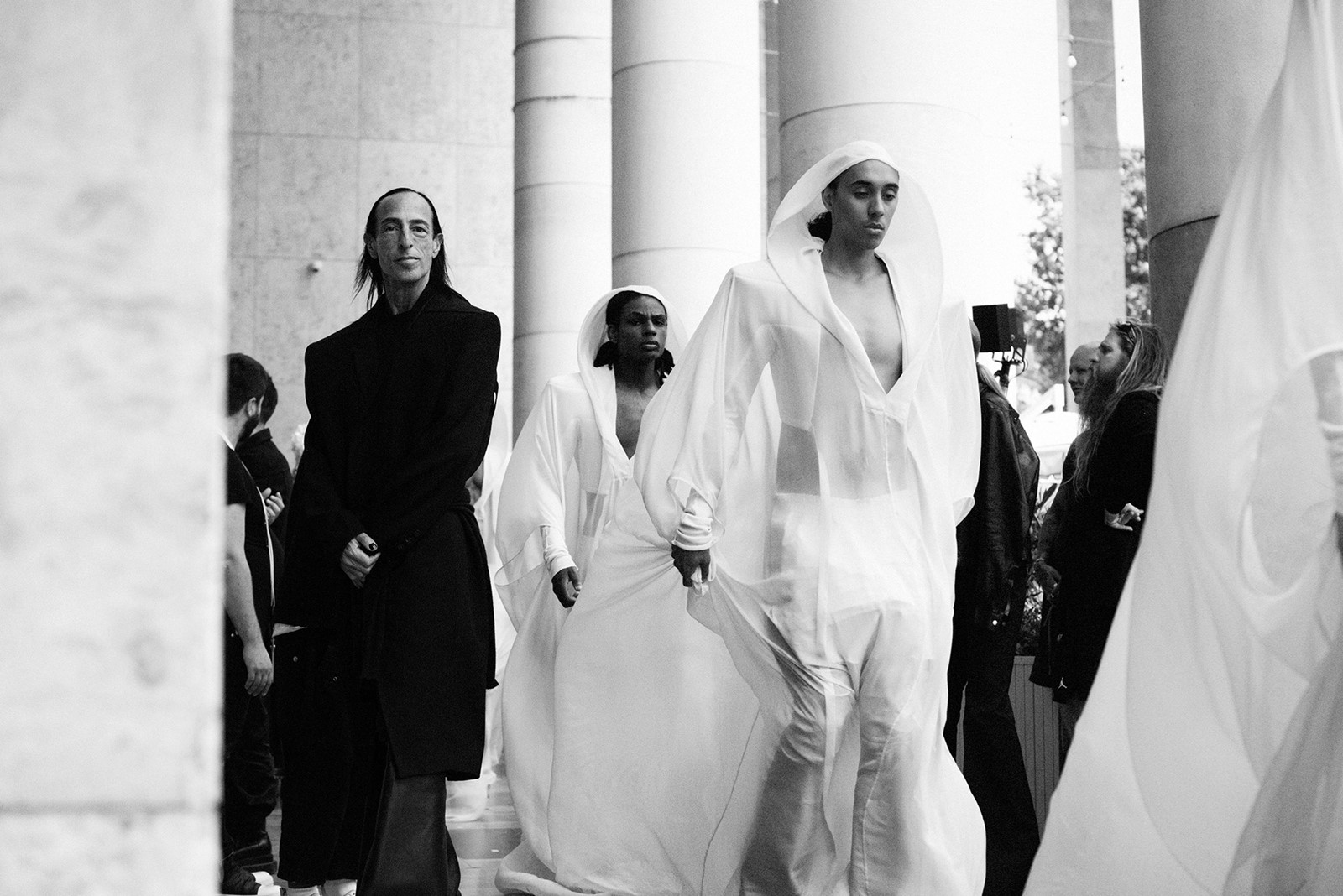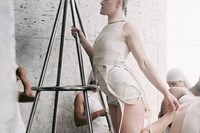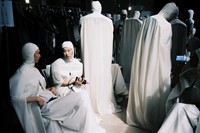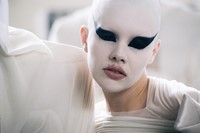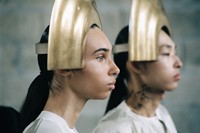Rick Owens said he felt guilty after his Autumn/Winter 2024 shows. Held in the salons of his home-cum-headquarters – although ‘salon’ is maybe the wrong word as the vibe is less bourgeoise, more bomb-shelter – it was by its nature small and intimate. Which is nice, but kind of means you have to cut your guest list down. And it meant that Owens was deprived of one of the things he loves especially about his open-air Spring/Summer shows: the throngs of fashion students, fashion fans and plain fashion freaks pressed against the gates of the basin of the Palais de Tokyo, eager to see the wonder unfold.
So, for next season, Owens veered wildly in the opposite direction. Intimacy schmintimacy – how about a spectacle on the scale of a Josef von Sternberg or Cecil B DeMille silver screen saga? The collection was titled Hollywood, which should have given us a hint of what was to come (alongside the rumours of a cast of thousands massed backstage). Actually, it was a cast of about 200 – some models, mixed in with the aforementioned hardcore Owens-ites from all walks of life – but still that made for a fashion show on a truly epic scale, throngs descending the marble staircase.
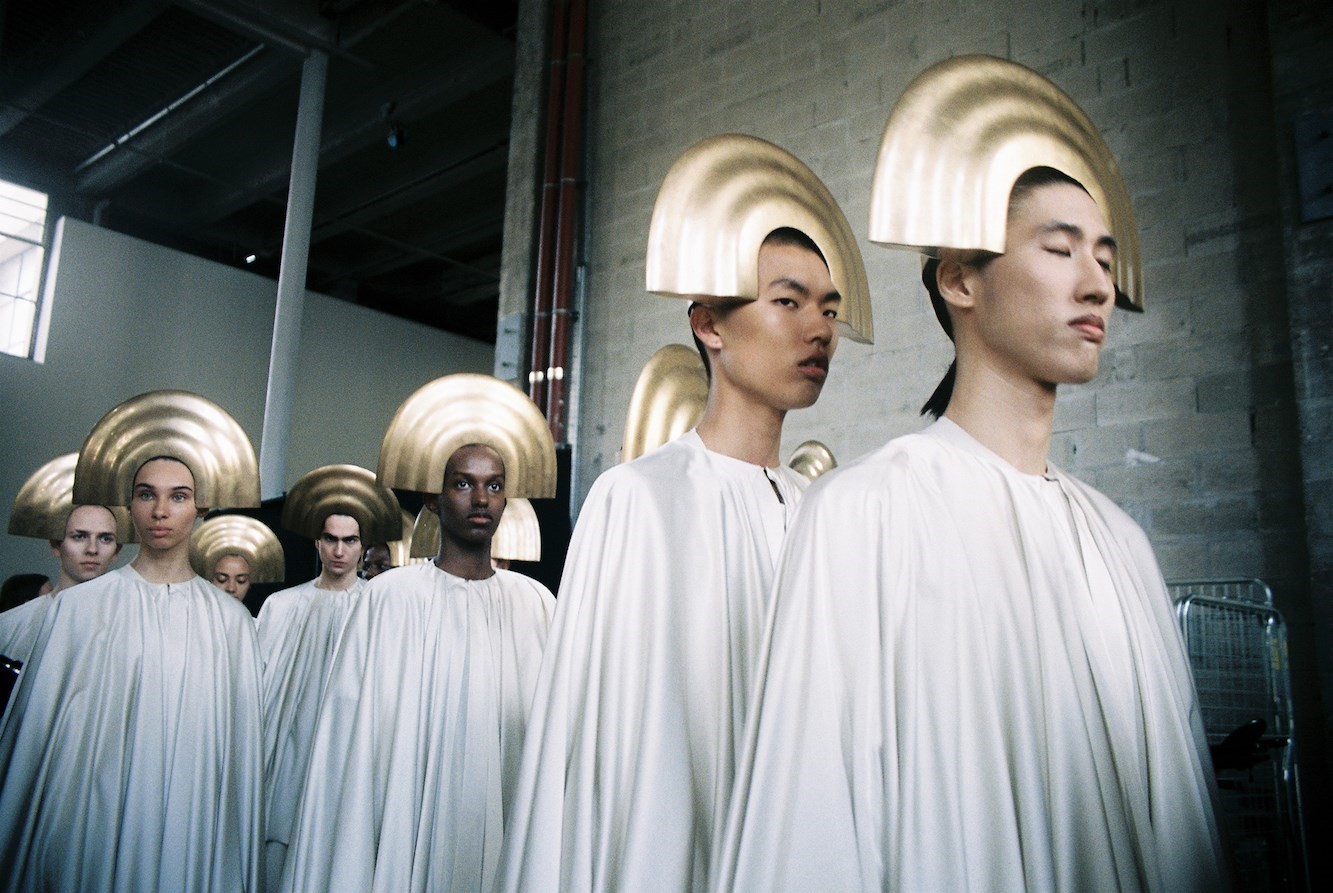
Owens embraced the fundamental difference, wholeheartedly. If his January menswear show was about the dramatic scale of his clothes astonishing at close quarters, this was about a wonder you could see from space – vast phalanxes of models marching, mostly dressed in variations on white. The proposals were actually simple: massed into groups of 20, there were ten silhouettes, ten outfits that toyed with Owens’s greatest hits. There were wrapped and strapped body-stocking tops with jutting Star Wars shoulders, crusted gilded capes with raw edges, hoof-like folded boots with plexi heels, floor sweeping cloaks, a passage of plissé silk jersey goddesses crowned with gilded metal Kokoshniks with distinct shades of Madame Grès (a long-term, often-overlooked Rick reference point). Owens played Beethoven – sadly, not Nights In White Satin – to underscore the operatic bombast and ceremony of the whole thing. And of course, it had an overwhelming power and magnificence. Your mind was blown.
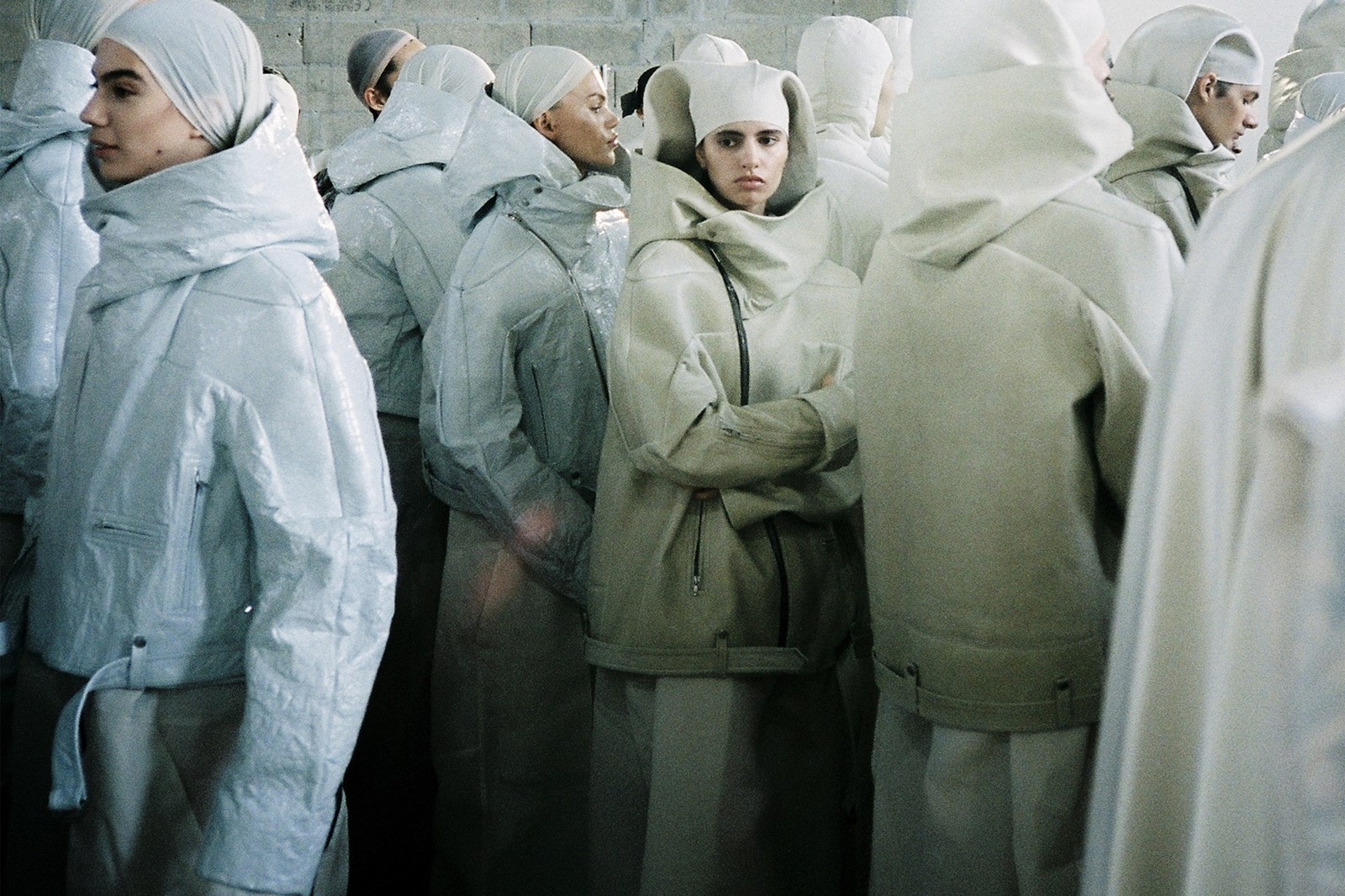
But it also had heart and soul, as with everything Owens does. “An army of love” was how he described the hundreds of individuals – of a multitude of body types and gender identities, an entire spectrum of humanity. Likewise, Hollywood isn’t just a distant, mythologised locale for Owens; he called it home for many years in the early 1990s, unconventionally launching his fashion label on Hollywood Boulevard. And even before that, he escaped his humdrum small-town childhood through its filter, absorbing by aesthetic osmosis the incandescent glamour of 30s movies, melding them with his love of rock music, creating a fusion that was utterly new and entirely personal: Madeleine Vionnet meets Marlene Dietrich on the set of The Day of the Locust. Displace it to Paris and that’s what Owens’ fluttering pale satins conjured up for me: another place, another time, another world entirely. Even in the multi-hyphenate, multifaceted multiverse that constitutes 21st-century popular culture, there are few in any creative discipline that can come close to the creative universe Owens has crafted for himself, where everything from fashion to furniture, workout gear to reading material, has a specific imprimatur, a mark of his authorship an authority.
They used to call Hollywood the Dream Factory back in the day. In fashion, Rick Owens is one of a chosen few who can give those auteurs a run for their money.
